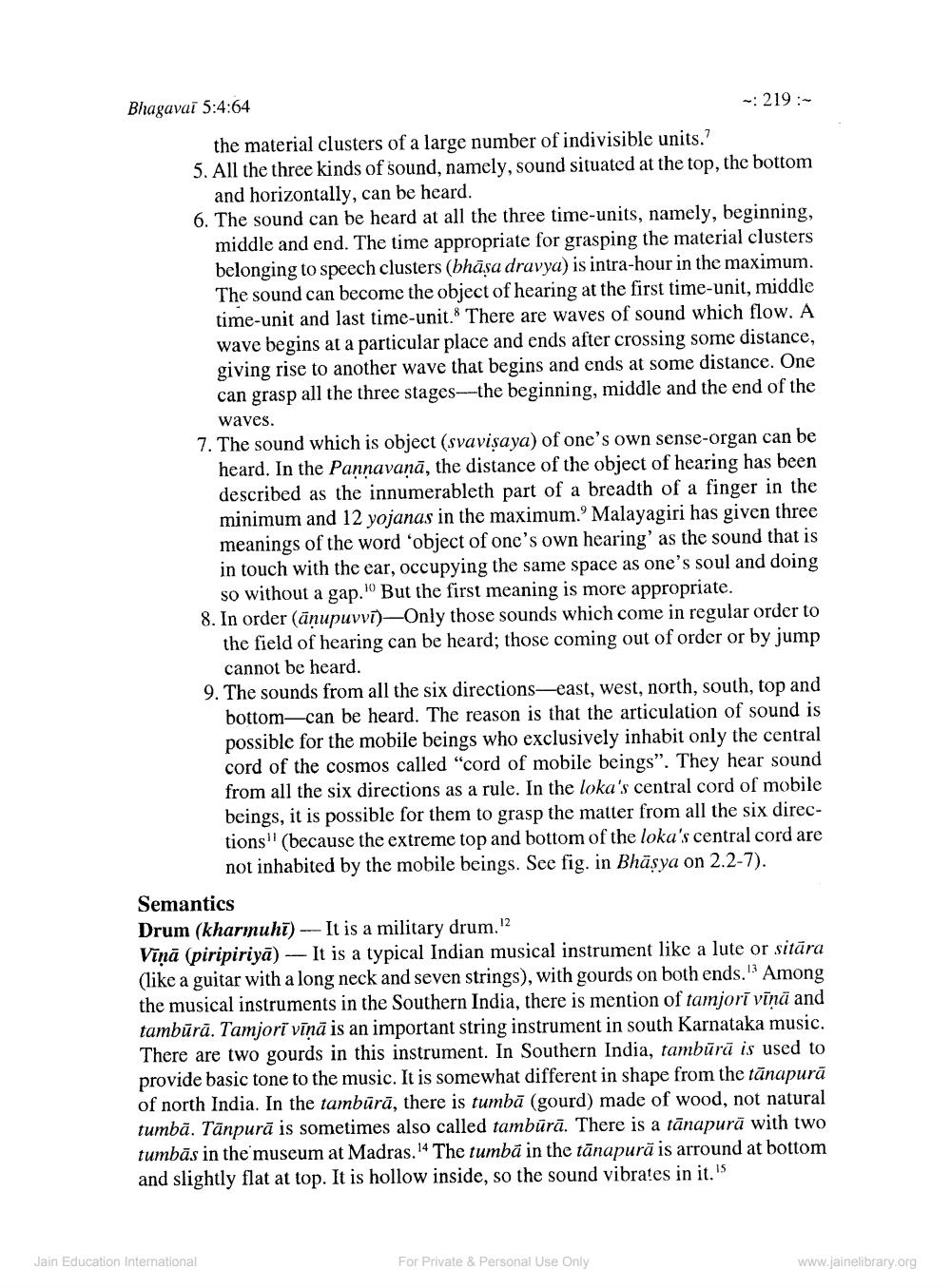________________
Bhagavai 5:4:64
- 219 :
the material clusters of a large number of indivisible units.? 5. All the three kinds of sound, namely, sound situated at the top, the bottom
and horizontally, can be heard. 6. The sound can be heard at all the three time-units, namely, beginning,
middle and end. The time appropriate for grasping the material clusters belonging to speech clusters (bhāşa dravya) is intra-hour in the maximum. The sound can become the object of hearing at the first time-unit, middle time-unit and last time-unit. There are waves of sound which flow. A wave begins at a particular place and ends after crossing some distance, giving rise to another wave that begins and ends at some distance. One can grasp all the three stages--the beginning, middle and the end of the
waves. 7. The sound which is object (svavișaya) of one's own sense-organ can be
heard. In the Pannavaņā, the distance of the object of hearing has been described as the innumerableth part of a breadth of a finger in the minimum and 12 yojanas in the maximum.' Malayagiri has given three meanings of the word 'object of one's own hearing' as the sound that is in touch with the ear, occupying the same space as one's soul and doing
so without a gap. But the first meaning is more appropriate. 8. In order (ānupuvvī)—Only those sounds which come in regular order to
the field of hearing can be heard; those coming out of order or by jump
cannot be heard. 9. The sounds from all the six directions-east, west, north, south, top and
bottom-can be heard. The reason is that the articulation of sound is possible for the mobile beings who exclusively inhabit only the central cord of the cosmos called "cord of mobile beings”. They hear sound from all the six directions as a rule. In the loka's central cord of mobile beings, it is possible for them to grasp the matter from all the six directions" (because the extreme top and bottom of the loka's central cord are
not inhabited by the mobile beings. See fig. in Bhāsya on 2.2-7). Semantics Drum (kharmuhi) -- It is a military drum. 2 Vīņā (piripiriya) - It is a typical Indian musical instrument like a lute or sitāra (like a guitar with a long neck and seven strings), with gourds on both ends. Among the musical instruments in the Southern India, there is mention of tamjorī vīņä and tambūrā. Tamjori vīņā is an important string instrument in south Karnataka music. There are two gourds in this instrument. In Southern India, tambūrā is used to provide basic tone to the music. It is somewhat different in shape from the tānapurā of north India. In the tambūrā, there is tumbā (gourd) made of wood, not natural tumbā. Tānpurā is sometimes also called tambūrā. There is a tānapurā with two tumbās in the museum at Madras.14 The tumbā in the tānapurā is arround at bottom and slightly flat at top. It is hollow inside, so the sound vibrates in it."
Jain Education International
For Private & Personal Use Only
www.jainelibrary.org




